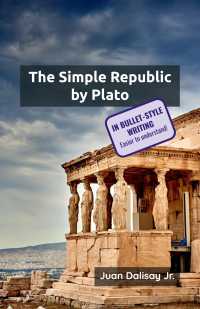The Law of Conservation of Idea and the Theory of Dynamism
December 29, 2020 3 minutes • 514 words • Other languages:
Table of contents
| Axioms | Propositions |
|---|---|
| Each Idea is Unique | Movement Comes from the Objects Preserving their Uniqueness |
The previous chapter explained how everything in Existence begins as either an idea or feeling in the metaphysical domain which then crosses over onto the physical domain as physical reality.
Everything in the physical domain has a metaphysical counterpart as its origin. We can say that the physical is the effect of the metaphysical. This is also why the metaphysical is superior to the physical.
All of Physics is dominated by:
- the Law of Conservation of Mass
- the Law of Conservation of Energy.
These state that:
- mass and energy cannot be created nor destroyed, and
- all processes are transformations of mass and energy.
Likewise, all of Superphysics is dominated by what we call The Law of Conservation of Idea. This states that all ideas:
- already pre-exist
- cannot be created nor destroyed, and
- are unique.
This uniqueness means that each idea has its own properties as imbued by its Creator.
- These inherent properties are called its dharma or true nature.
- The inherent property of a unique idea or object is called svadharma
This law explains the principles in various sciences, such as:
- The mind having only one thought at a time in Psychology
- The Pauli Exclusion Principle in Physics
- A territory having only one state in Politics
Uniqueness Leads to All Movement in Existence
This property of uniqueness creates all of the dynamism in both physical and metaphysical domains. This dynamism is what we call change, movement, and evolution.
For example, suppose you have a tray that can only hold 10 apples.

Adding more apples will either:
- make those additional apples fall off if the tray is strong, or
- make the apples in the tray burst out if the tray is weak.
Either way, the mere addition of apples causes movement, as a reaction to those new additions.
The tray represents the mind of the universe which holds its ideas. The addition of new ideas creates reactions from the already-existing ideas.
This leads to movement for those new and old ideas inside the universe-container. This movement affects all ideas just as the addition of the apple affects all apples already in the tray – the more ideas, the more the dynamism and energy.
From here it follows that:
- the universe is inherently dynamic
- there is an inherent potential dynamism in each object
- an object’s dynamism can be tapped by letting it interact with the proper objects other than itself
- the dynamism of objects depend on their relations with each other
This is the foundation of our Theory of Dynamism.
This theory aims to know the causes and effects of all movements, whether physical or metaphysical. This is to harness such movement and dynamism in order to reach our goals, such as to solve problems that are unsolved by Physics and Science.
In the metaphysical domain, these movements take the form of reflection (as the ‘bouncing back’ mentioned in Chapter 1), deflection, dissipation, merging, etc. These are the dynamics of waves. Thus, we say that the metaphysical domain has a wave-like nature.






